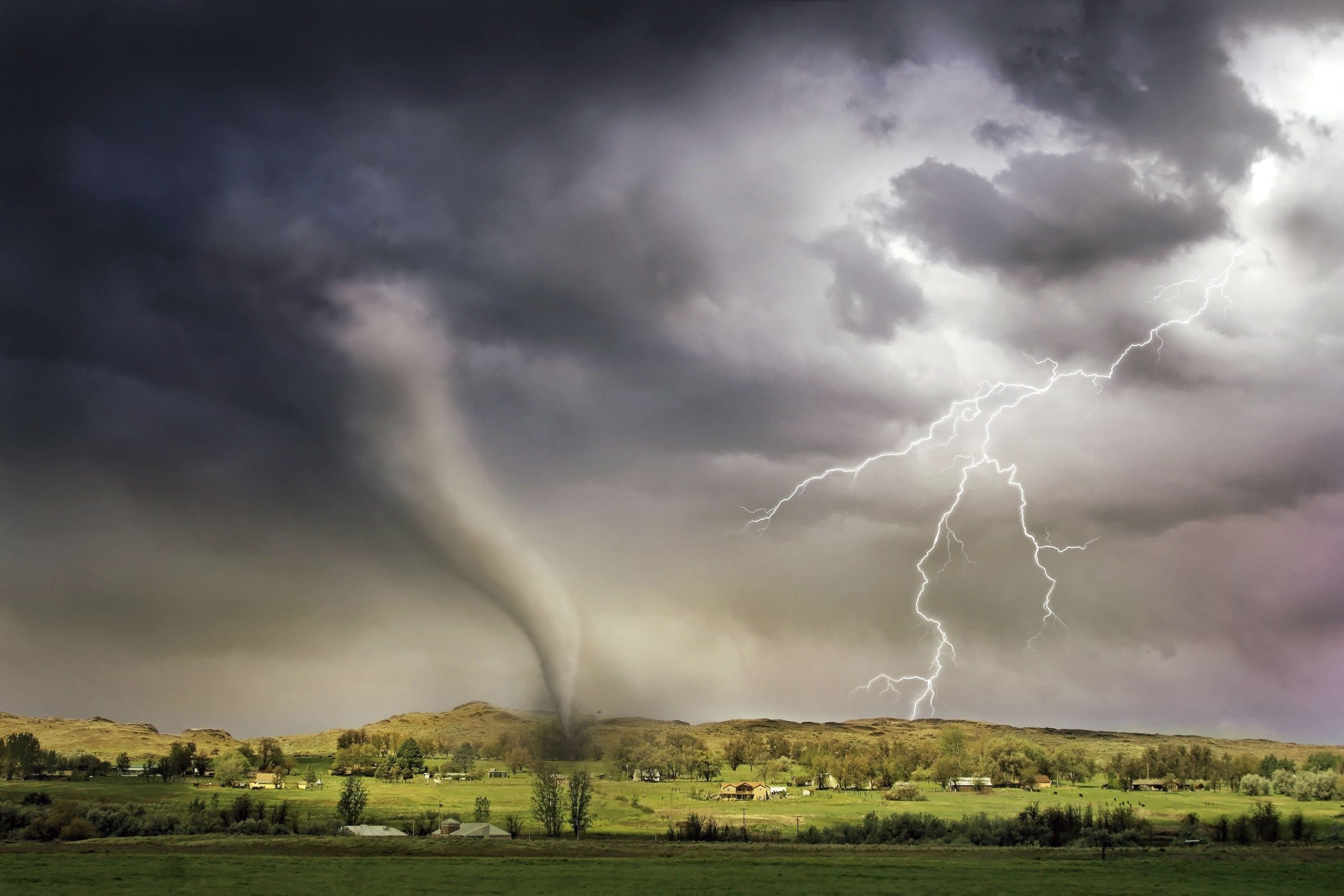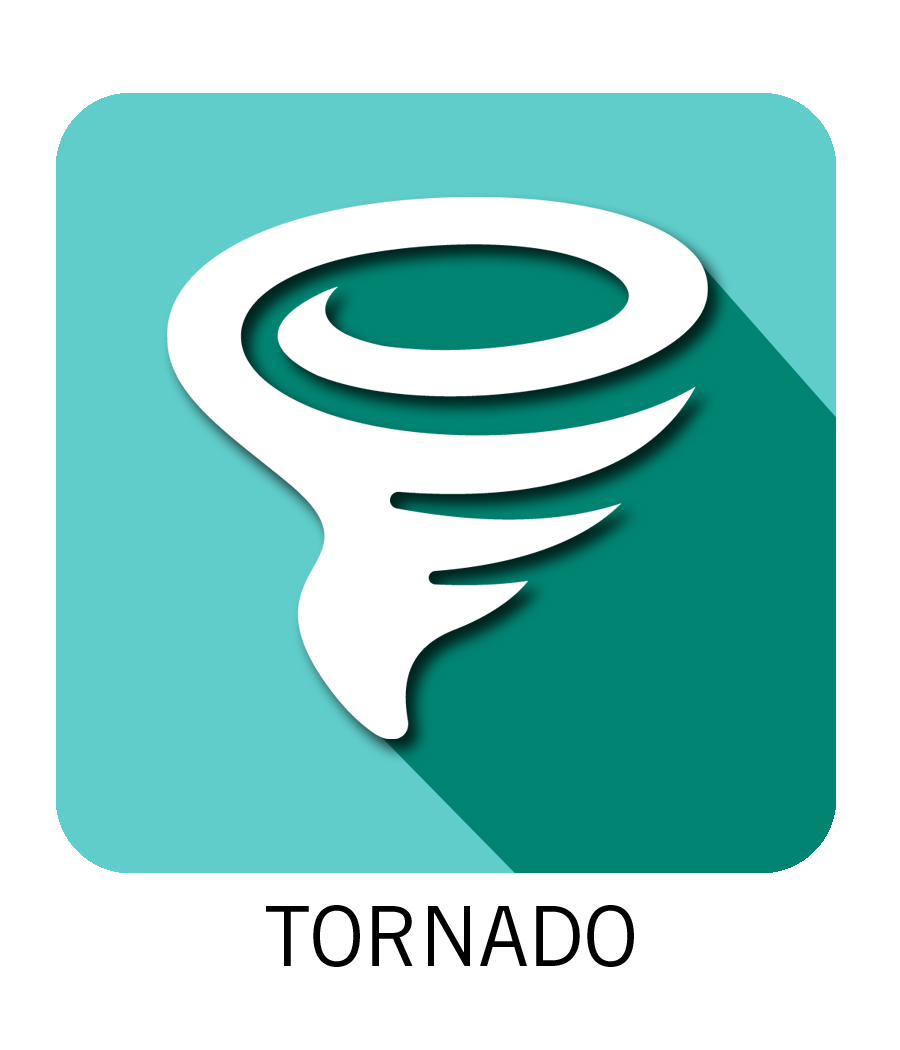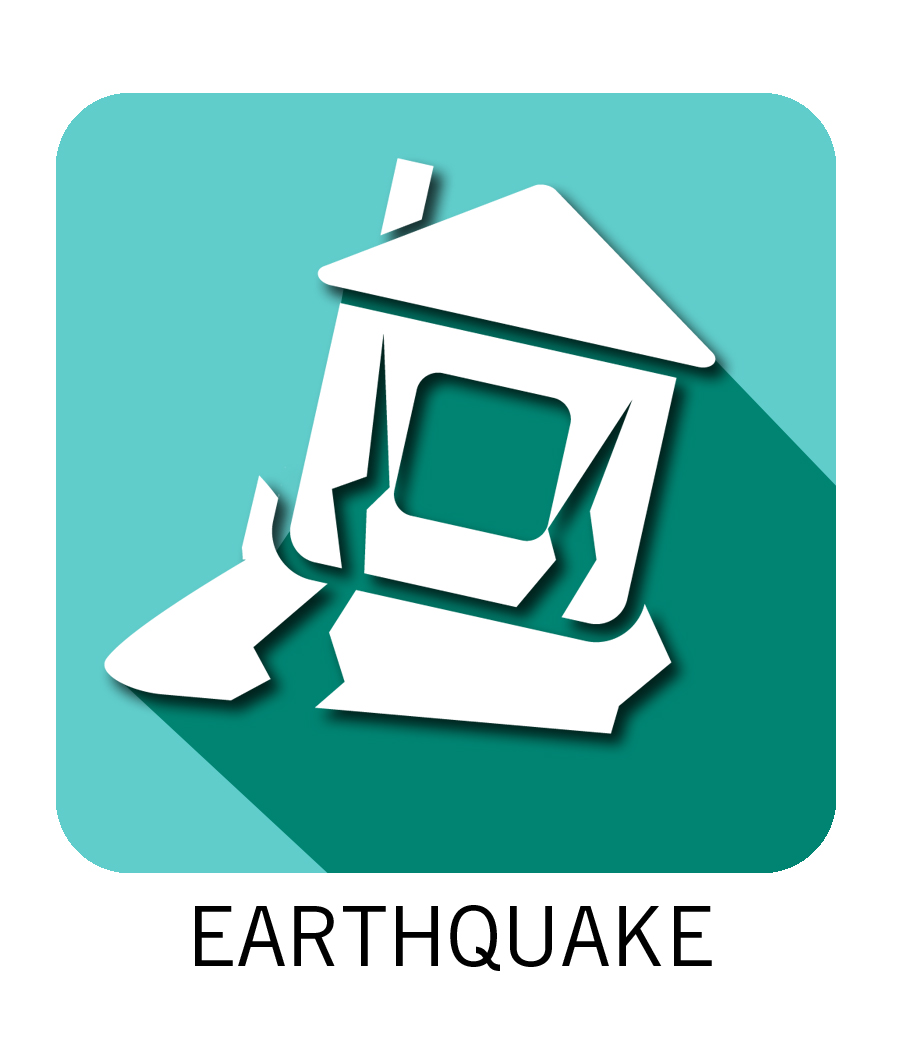
Tornado
Tornadoes are nature’s most violent storms. Spawned by powerful thunderstorms, tornadoes can cause fatalities and devastate a neighborhood in seconds. A tornado appears as a rotating, funnel-shaped cloud that extends from a thunderstorm to the ground with whirling winds that can reach 300 miles per hour. Damage paths can be in excess of one mile wide and 50 miles long. Every state is at some risk from this hazard.
Some tornadoes are clearly visible, while rain or nearby low-hanging clouds obscure others. Occasionally, tornadoes develop so rapidly that little, if any, advance warning is possible.
Before a tornado hits, the wind may die down and the air may become very still. A cloud of debris can mark the location of a tornado even if a funnel is not visible. Tornadoes occur near the trailing edge of a thunderstorm. It is common to see clear, sunlit skies behind a tornado.
Can I protect myself from a tornado?
The Fujita scale (F-scale) uses observed damage to determine a tornado’s wind speed:
-
- F0 – GALE (< 72 mph): Some damage to chimneys. Tree branches were broken off. Shallow-rooted trees uprooted.
- F1 – MODERATE (73 mph to 112 mph): Peels surface off roofs. Mobile homes overturned. Moving autos pushed off roads.
- F2 – SIGNIFICANT (113 mph to 157 mph): Considerable damage. Roofs torn off frame houses. Large trees snapped or uprooted. Light-object missiles generated.
- F3 – SEVERE (158 mph to 206 mph): Severe damage. Roofs and some walls torn off well-constructed homes. Trains overturned. Most trees in forests uprooted. Heavy cars lifted off ground and thrown.
- F4 – DEVASTATING (207 mph to 260 mph): Well-constructed houses leveled. Structures with weak foundations blown off some distance. Cars were thrown and large missiles generated.
- F5 – INCREDIBLE (> 260 mph): Strong frame houses lifted off foundations and disintegrated. Automobile-sized missiles fly through the air in excess of 100 mph. Trees debarked.
General Safety Tips
-
- Stay indoors and away from windows and glass doors.
- Close all interior doors. Keep blinds closed. Do not have a false sense of security if the weather calms, it could be the eye of the storm and winds can pick up again.
- Go to the center of a small interior room, closet, or hallway on the lowest possible level of the building.
- Lie on the floor under a table or other sturdy furniture.
- Do not use elevators.
- In the event of an injury or life-threatening situation, contact 911 immediately and notify your manager or someone else in management.
- Evacuate if you are directed by local authorities, or management, or if you feel you are in danger. Be sure to follow any instructions you are given.
Online Resources:








